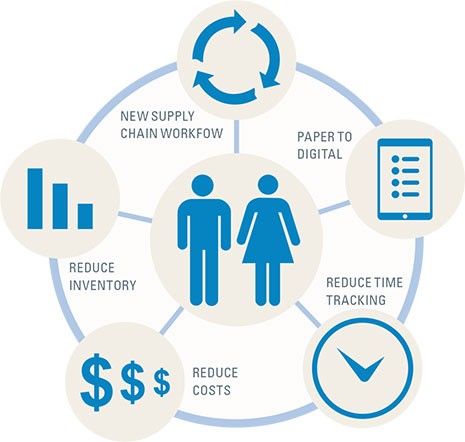Wesley Medical Center, a Wichita, Kansas, hospital, took the challenge to minimize expired endoscopy supplies and improve overall inventory management head-on. Working with Boston Scientific, the facility improved their ordering processes and met both goals.
The 700-bed Wesley Medical Center in Wichita, Kansas, is growing and currently building a children’s hospital. The facility treats 24,000 patients each year. It boasts a rich century-plus old history, and this year entered its fourth decade as a Healthcare Corporation of America (HCA) hospital. The facility’s endoscopy department performs 400 to 500 procedures each month, mainly outpatient.
As such, the facility does not have time, bandwidth or budget to allow for expired endoscopy supplies, or to carry nearly $200,000 worth of endoscopy inventory at any given time to avoid supply shortages.
Assistant Nurse Manager Lindy Clingan, in the endoscopy department, decided to take on a new supply chain workflow that moved the process from paper to digital. In addition, Clingan consolidated the endoscopy department’s ordering processes and inventory tracking. By doing so, the department decreased the total number of orders and reduced inventory on hand from roughly $180,000 to $120,000. Wesley Hospital expects to see more reductions to come as the new workflow process tracks more closely the ordering and use of endoscopy supplies.
Improving Supply Chain Impacts Patient Care
The genesis of Wesley’s endoscopy supply chain process improvements came out of conversations between Boston Scientific account representative Jonathan Gutierrez and the endoscopy staff last year, in which he heard complaints about expired inventory ranging from inexpensive supplies up to higher-cost medical devices. They were overstocked on some items, running out of others, and making do with substitute items at times.
Gutierrez and Clingan collaborated late in 2015 through early 2016 on the project. As a first step, Boston Scientific worked with a third-party to conduct an initial count of Boston Scientific endoscopy products. From the inventory count, order history data and knowing what items frequently run low, Boston Scientific was able to recommend “par levels” for each category of Boston Scientific products ordered. The par levels were then used to determine order amounts for each supply based on procedure mix estimates. Going forward, weekly counts are necessary to determine order quantities and track expirations.
Clingan went on to implement additional streamlining of ordering processes to the point where Wesley has now halved its number of orders per week.
It’s not just the hospital’s bottom line that benefits from projects like these, Clingan explained. Having the right supplies at the right time in the workflow directly impacts patient care and satisfaction. When substitute supplies aren’t being used or procedures don’t have to be rescheduled due to lack of on-hand supplies, patients get the best experience possible. It also helps increase staff efficiency and satisfaction, because they’re not hunting through expired product to find one that’s usable for the next patient case.
“You don’t realize, until you don’t have to do inventory counts anymore, how much time it takes,” Clingan said, who now relies on Boston Scientific to do the counting of Boston Scientific products. “With that type of support, department managers should be able to implement this type of workflow process in any facility.”
Replicating Inventory Processes for Improvements in your Department
The improvements have made such an impact that Clingan reports the endoscopy inventory project may be replicated at other HCA hospitals.
Facilities outside the HCA network can also benefit from examining their endoscopy ordering processes. Clingan offers a few tips to get started:
• Get your vendors involved in counting inventory and checking for expired items, which reduces staff overhead and frees up time for patient care.
• Show the hospital accrediting organization The Joint Commission – whose surveys determine whether or not you can take Medicare patients – what you’re doing. In the midst of the endoscopy inventory management makeover, Wesley underwent its accreditation survey. Clingan outlined to surveyors what she was doing to improve her department, which helped earn high marks.
• Set a goal for improvement, so you know what success looks like.
• Divide and conquer unwieldy inventory and ordering processes by assigning different categories of supplies or subspecialty supplies to different staffers within the department, and making them accountable for items in stock, expired or out of stock. In Clingan’s department, that means one nurse handles pulmonary supplies, another takes care of general supplies, another endoscopic retrograde cholangiopancreatography (ERCP), etc.
When a product expires, not only is that a loss, but the department has to order a replacement and pay for it, too. Stopping instances of expired product becomes a powerful tool to stem department costs, explained a member of the Boston Scientific Endoscopy services and solutions team.


